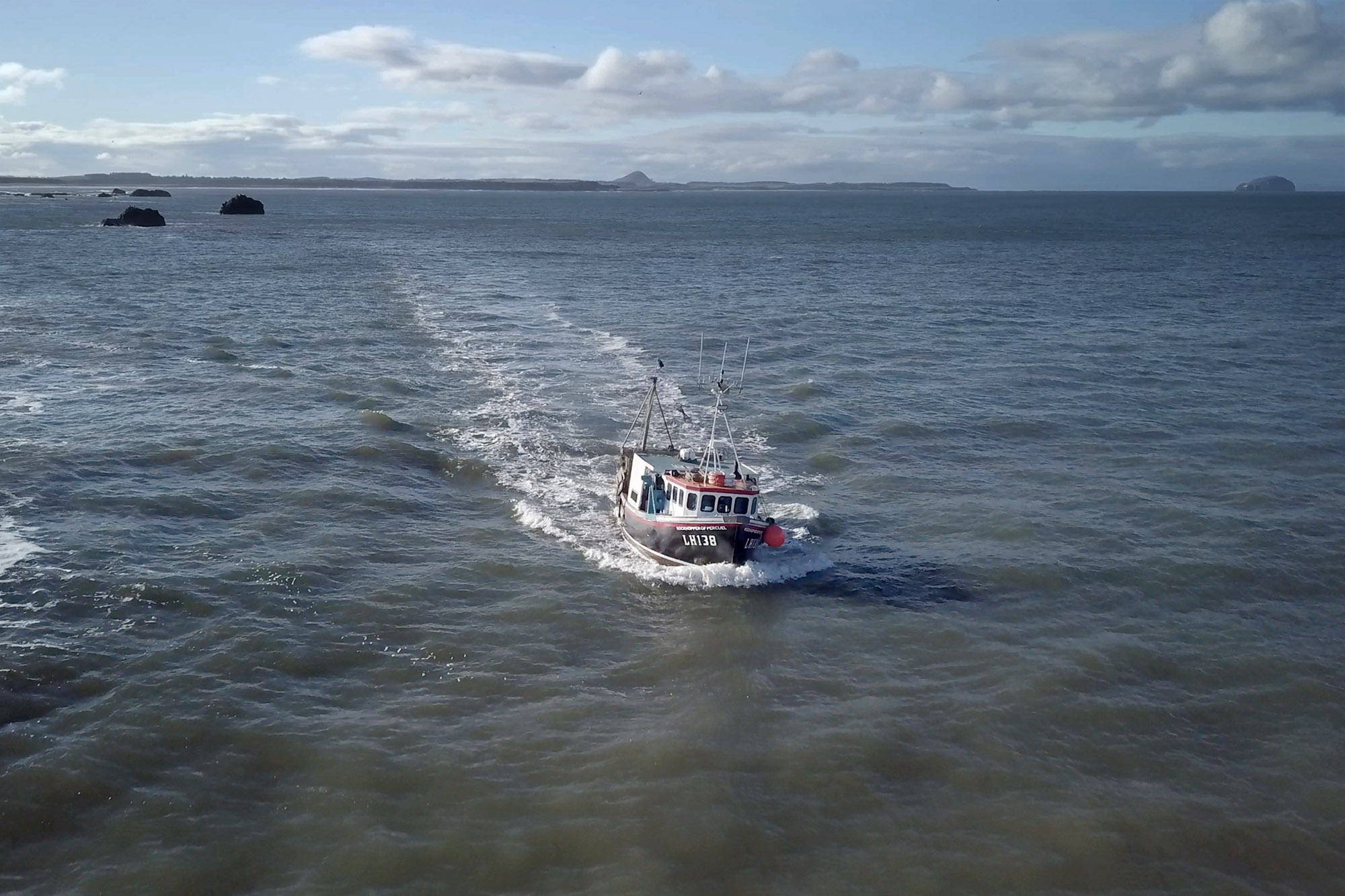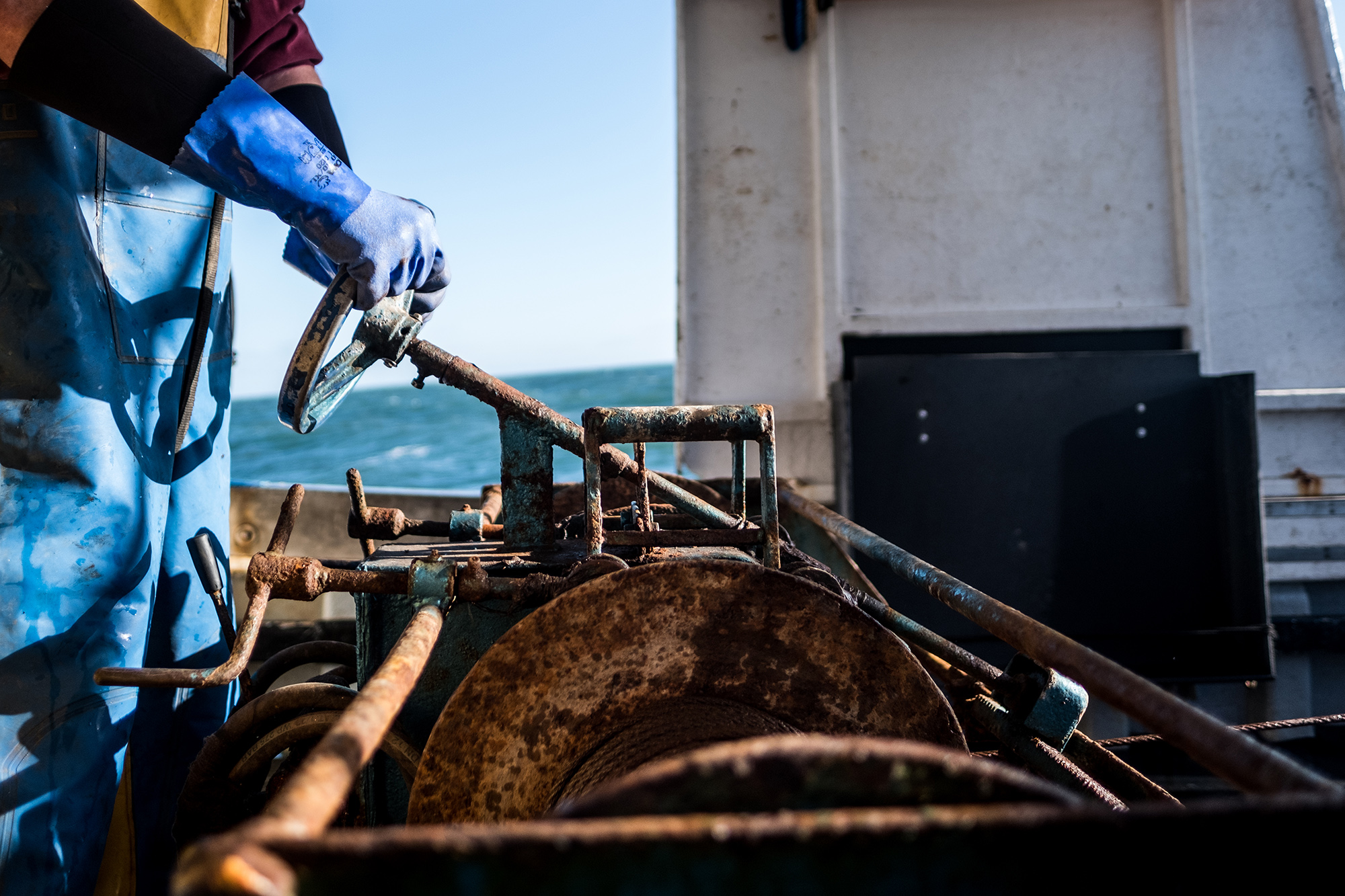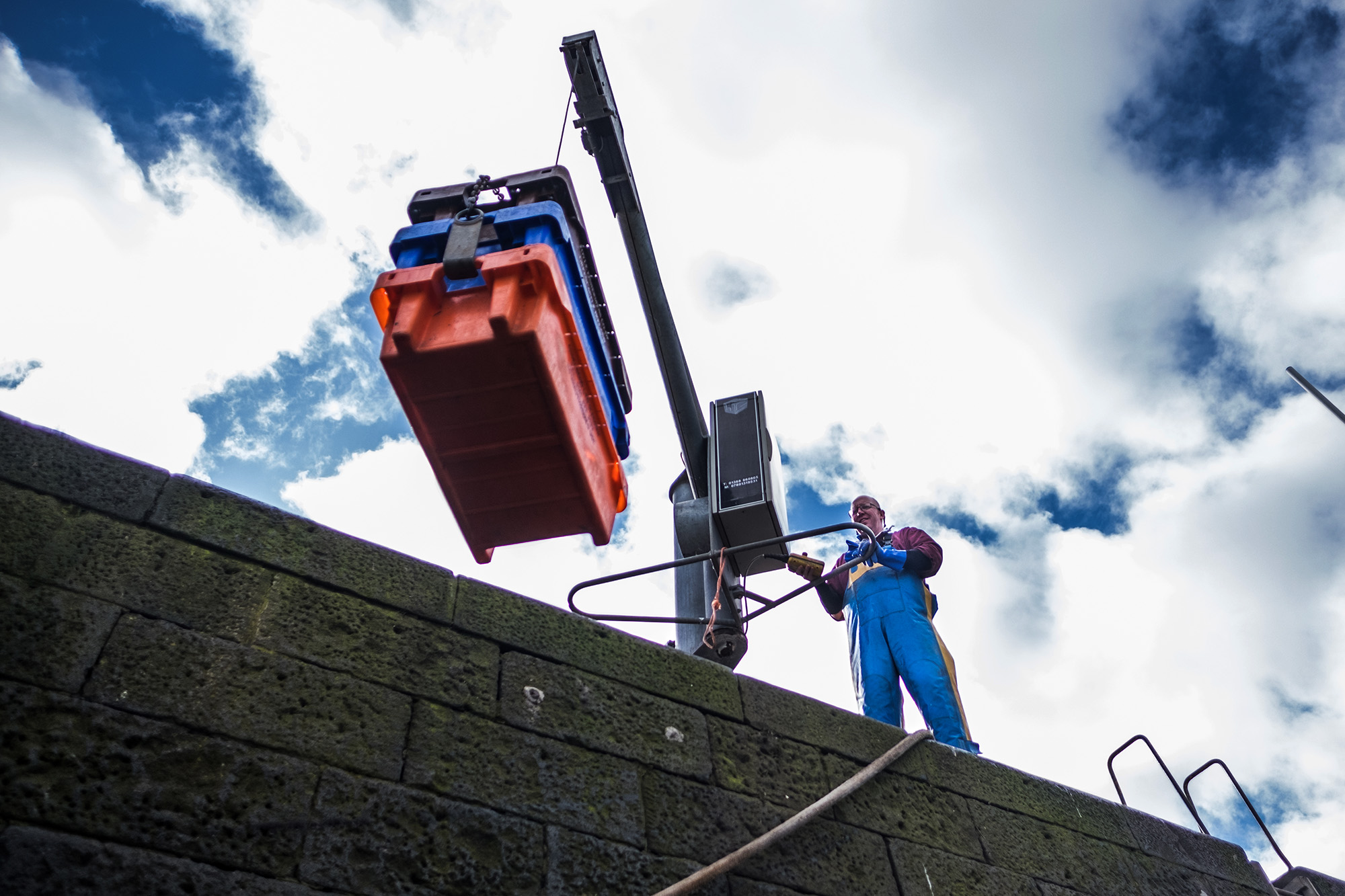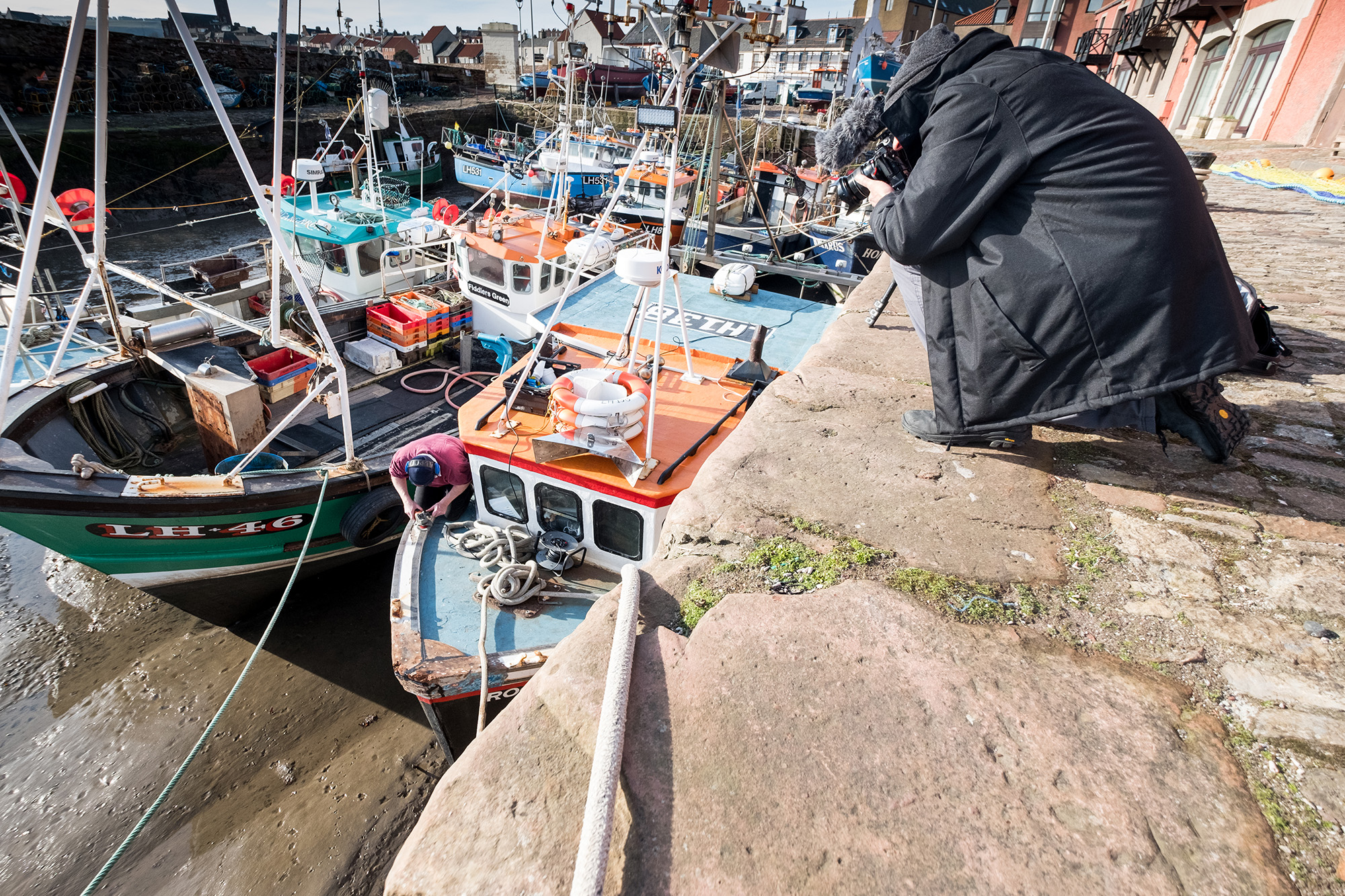For 2018 I have embarked on a new project telling the story of a year in the life of a local fisherman and his 10-metre trawler called the Rockhopper of Perceul.
I live in the small fishing town of Dunbar on Scotland’s south east coast which boasts a small fishing fleet of twenty nine boats ranging from small creel boats up to medium size trawlers. The Rockhopper is one of two trawler / potters that work the seas off of Dunbar all year round.
The original idea was to go out with Barry Brunton, the skipper of the Rockhopper, to do a test of the new Fujifilm X-H1’s In Body Image Stabilisation (IBIS) system but I soon saw the potential to do much more. I used to be a newspaper photographer and I still love to tell a story and I immediately saw a huge potential in the Rockhopper and Barry.
So Barry and I agreed very early on to expand this into a 12-month long project where I would cover as many of the aspects of the job fishing the North Sea as I could.
I decided that the project would consist of images and video, with one three-minute video every month on an agreed subject. Part one would be called ‘A Typical Day’ and would be a ‘behind the scenes’ look at a typical winter’s day out in the North Sea.
Before this, Barry took the Rockhopper out for a short test run allowing me the opportunity to fly my DJI Mavic Pro to get some aerial shots of the boat for the opening title video sequence that would be used on each video. I made the mistake of flying the drone from the back of the boat thinking the large storm deck would be a great helipad.
What I hadn’t considered was the fact that the Rockhopper was moving all the time and there was a cross wind to contend with. I did manage to land the drone twice, much to my great relief, but decided that I would fly it from the harbour wall to complete the video.
Two days later I was up at 04:30 to head down to the harbour where Barry was preparing the Rockhopper for sea to go trawling for prawns. I had packed the X-H1 and X-T2 with the 10-24mm, 16-55mm, 50-140mm and the 16mm f1.4 lenses. I also took along with a couple of GoPros which I placed in fixed positions, one on the bow of the Rockhopper and one on the stern overlooking the net winch.
The X-H1 would be used for shooting video and stills, but primarily for video. The X-H1 was fitted with a RODE VIDEOMICPRO external microphone, which I covered with a ‘deadcat’ to cut down on wind noise.
We set off from Dunbar before dawn following the other boats that were heading for the fishing grounds. The Rockhopper has a cruising speed of just 7 knots, with a top speed of 9 knots, so it took about an hour before Barry started to prepare the nets to go over the side. In the meantime, the sun started to come up over the horizon and we were treated to a spectacular sunrise to start the day.
I was filming the trip out to the fishing grounds and the preparations to deploy the nets on the XF16-55mm fitted to the X-H1. The 16-55mmF2.8 is the only Fujinon zoom not to feature Optical Image Stabilisation (OIS) but the X-H1s IBIS takes care of this and the handheld footage was incredibly steady despite the rolling of the Rockhopper.
It takes Barry about 30 minutes to deploy the nets and once they are in the water it is a case of sitting and waiting for three to four hours as the Rockhopper steams in a straight line pulling the trawl net behind her. In the cabin there is a fishing sonar that displays what is below the keel of the Rockhopper. The part of the North Sea were are in is 30 fathoms or 55 metres deep and the sonar gives Barry an idea if there are any prawns, fish or obstacles such as rocks or even ship wrecks below. He wants to avoid anything that will foul the nets.
Another hazard is other shipping. This part of the North Sea is very busy with large ships going in and out of Leith, Rosyth and Grangemouth. With the seven-metre net deployed, the Rockhopper is only doing two knots and cannot turn easily. The large coasters and tankers are doing around 20 knots and should keep a lookout for smaller vessels, but there have been some very near misses and it is a hazard that I didn’t appreciate until one container ship got within 800 metres of the Rockhopper’s position and it was very large in the wheelhouse window.
While the Rockhopper is pulling the net the sea starts to get a little choppier as the wind increases and the tide turns. Being a small trawler, and with Barry operating the Rockhopper single-handed, there are narrow margins where the swell makes trawling unsafe. With one eye on the weather Barry decided to bring in the net after three hours in the water.
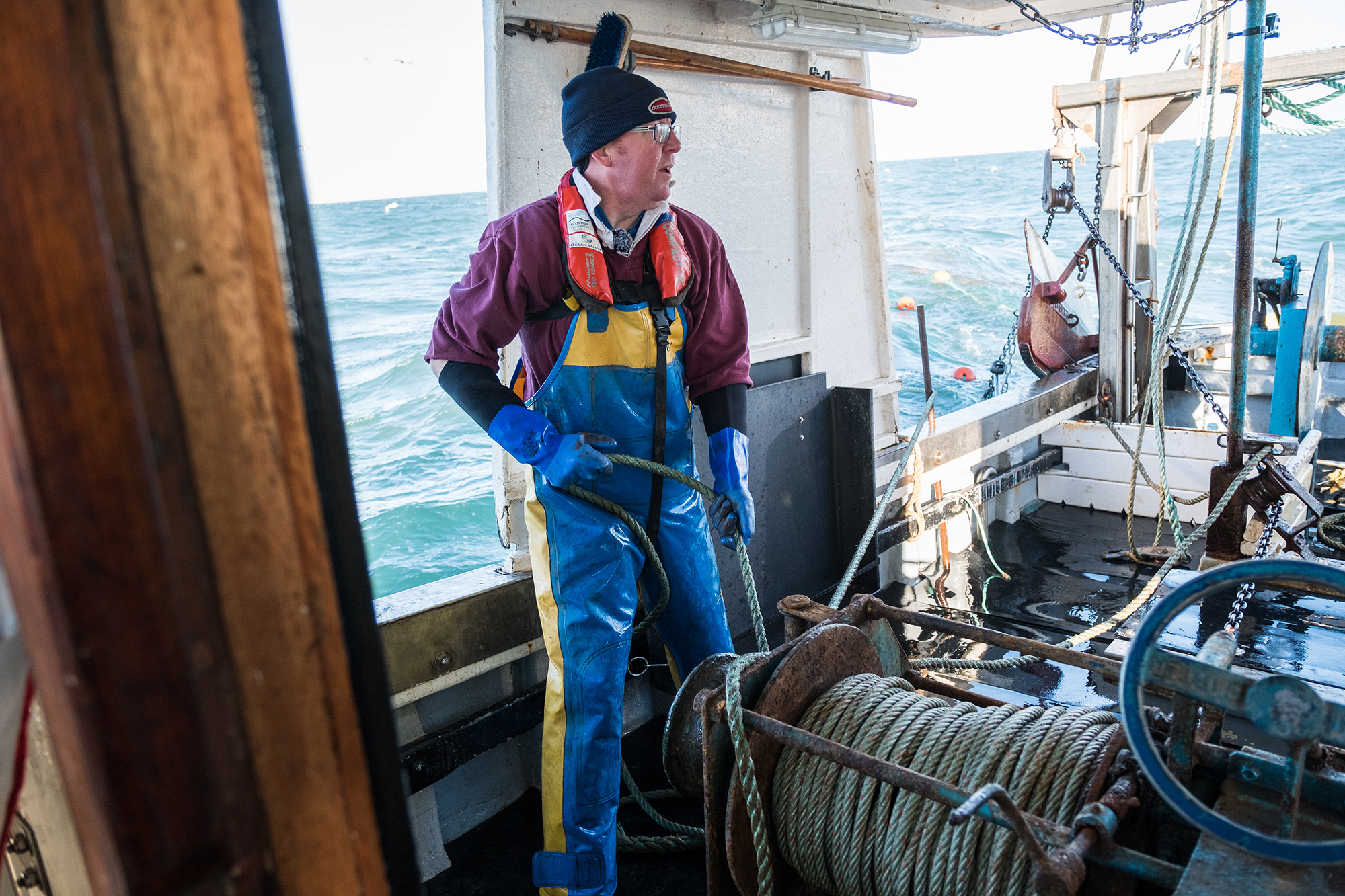
After a three hour tow, it is time to land the first catch of the day – Fujifilm X-H1 + XF16-55mmF2.8
With the Rockhopper rolling as the waves get bigger, Barry struggles to bring in the nets and land his catch. Once the catch is on board, the seven metre long net is stowed and we head back to Dunbar, crashing through the waves. All the time I am filming the proceedings and the X-H1’s IBIS continues to impress, as the resulting video shows.
After just over an hour of struggling through the waves, the Rockhopper makes it back safely to Dunbar Harbour. However Barry’s day is not yet done as he now has to sort out his catch and send it off to market. Because he was only able to make one tow of the net, Barry will be lucky if he makes enough from the catch to cover the cost of the fuel expended.

Once in harbour Barry’s day isn’t complete until he has sorted the catch and sent it to market – Fujifilm X-H1 + Samyang 8mmF2.8
When we go on holiday we see the fishing boats lined up in the harbour, with fishermen sitting around painting their boats or mending their nets. Then they ‘up anchor’ and head out for a day’s fishing under the bright sunshine and flat calm seas. It certainly all looks idyllic from the shore and how many times have we thought that fishing would be a great way of life? However the reality is somewhat different.
Fishermen are constantly checking the weather forecast to see if they will be able to go out and earn some money. The recent winter storms have kept the boats in harbour for longer than they would like and there have been several large repair bills for damage caused by the storms. When they do get out onto the water, the fickle weather can turn really quickly and cut short the working day. Fishing is a hard life, with a working day being around sixteen hours. The income is variable depending on the seasons but the boats need to be maintained regardless if they are working or tied up.
The project working with Barry Brunton has given me a new appreciation of the hard work the fishermen of Dunbar and around the world undertake every time they put to sea, and I am looking forward to telling story of the Rockhopper of Percuel, using the Fujifilm X-H1 to capture video and stills, in 2018.
The Fujifilm X-H1 continues to impress me and I am using it more and more for video work as well as for still images. The IBIS keeps everything steady when shooting handheld and in the video below you can see how much the Rockhopper is rolling in the heavy seas but the footage is very steady indeed.
For more information on the Rockhopper of Percuel project CLICK HERE
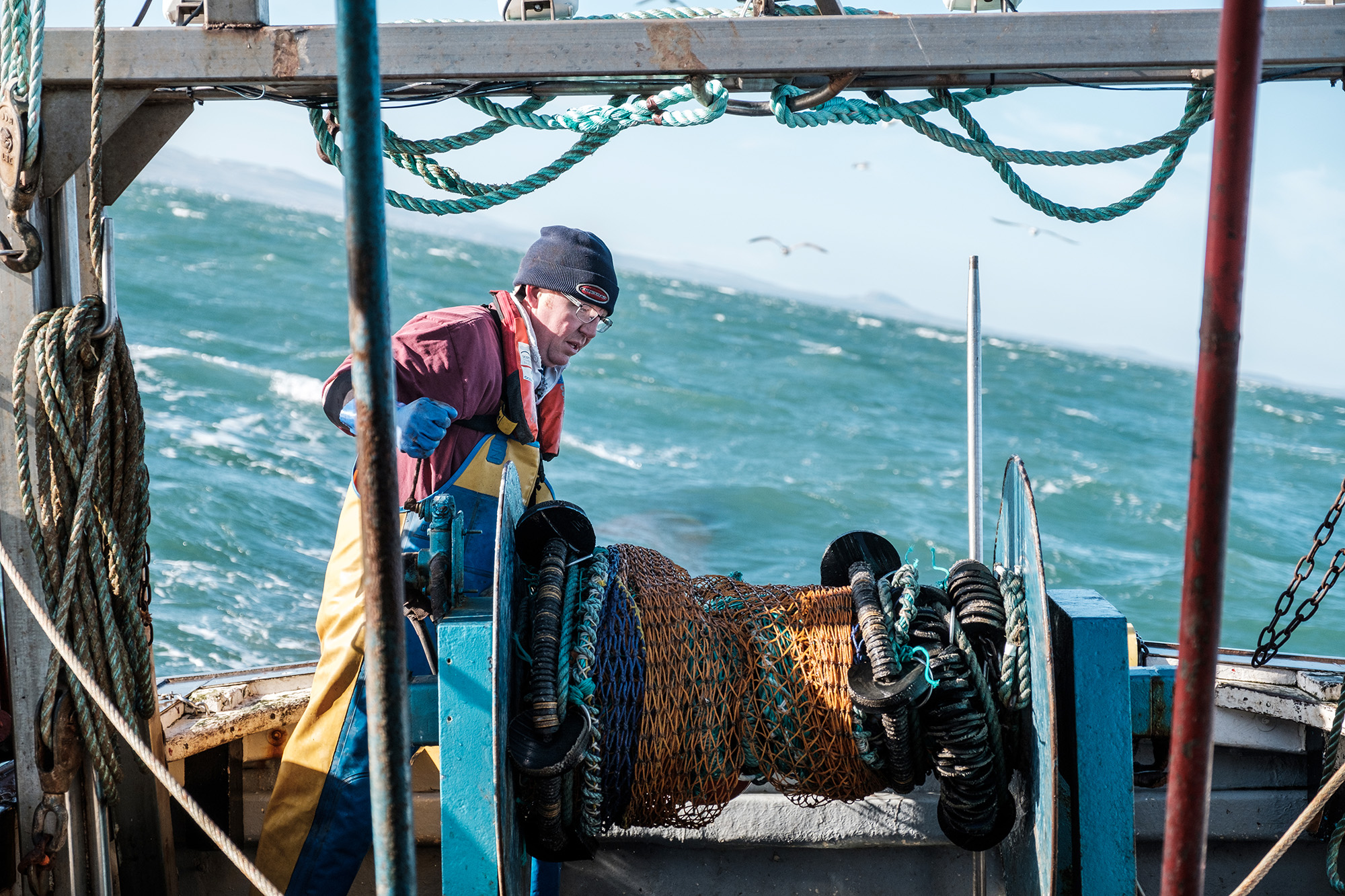
The sea starts to get very choppy and the Rockhopper rolls are the net is brought back on board – Fujifilm X-H1 + XF16-55mmF2.8



